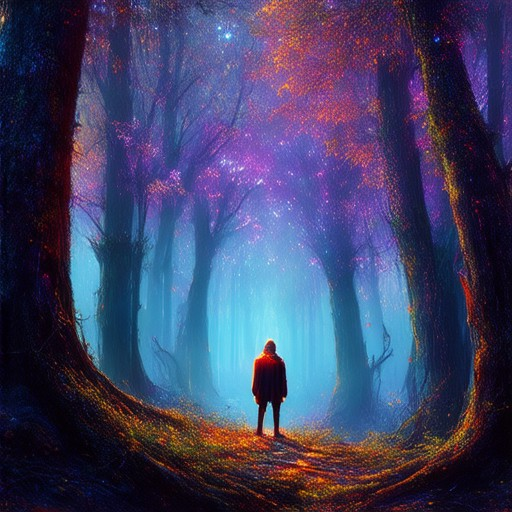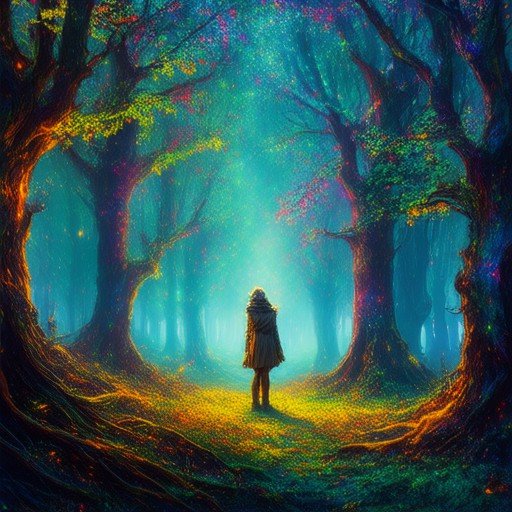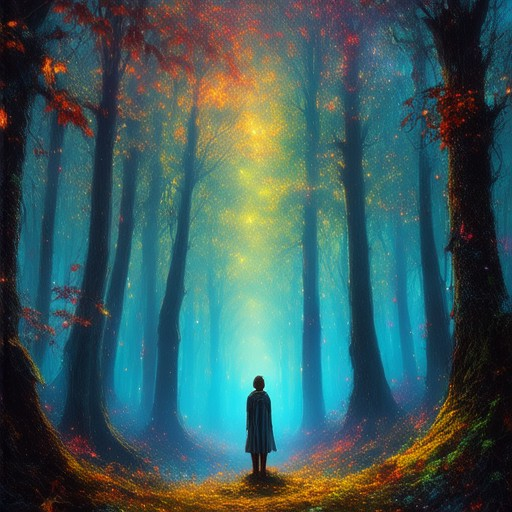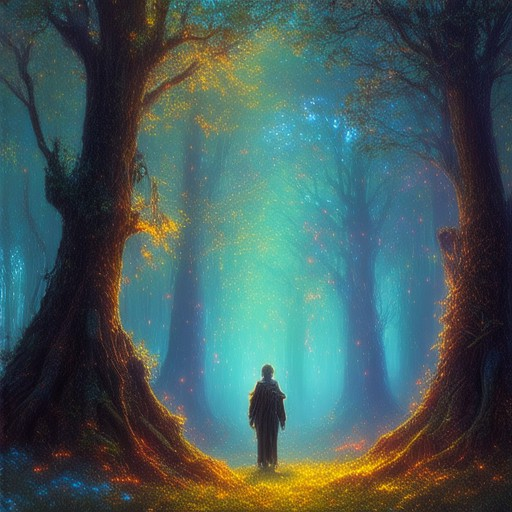Discover the world of artistic expression with our comprehensive guide to free art tutorials and projects designed for both adults and beginners. Whether you’re a seasoned artist looking to refine your skills or someone just dipping their toes into the creative realm, there’s something here for everyone. Art has the unique ability to unlock hidden talents and spark creativity, and with the right resources, anyone can achieve remarkable results. In this article, we’ll explore the essential rules of art, top platforms offering free tutorials, and practical tips to overcome creative barriers. From finding inspiration to mastering step-by-step techniques, we’ll guide you through the entire process of creating stunning art projects. Join us as we uncover how to harness your creative potential and embark on a journey of self-discovery through art.
Key Takeaways
- Capture Inspiration in Everyday Moments: Look around you and note potential subjects in your surroundings and nature.
- Expand Your Creative Horizons: Visit museums and galleries to explore diverse art styles and mediums.
- Use Sketchbooks for Idea Development: Regularly jot down thoughts and ideas in a sketchbook to spark project concepts.
- Engage with Artist Communities: Network with other artists for support, feedback, and fresh perspectives.
- Leverage Online Resources: Utilize platforms like Artful Journey and YouTube channels for tutorials and project ideas.
- Maintain a Creative Routine: Set daily challenges to keep your creativity active and growing.
- Experiment with Mixed Media: Combine different materials to create unique textures and effects in your artwork.
- Incorporate Personal Narratives: Add depth to your projects by infusing them with your personal stories and emotions.
- Explore Real-World Projects: Attend festivals and community events for inspiration and tangible project ideas.
- Utilize Technology Wisely: Use AI tools and virtual workshops to enhance your creative process.
- Define Your Vision Clearly: Set clear goals and choose a medium that suits your style before diving into your project.
- Organize Your Workspace: Prepare necessary tools and create a dedicated space to foster productivity.
- Seek Inspiration Beyond Your Bubble: Engage with educational resources like books, movies, and podcasts to broaden your creative scope.
- Break Projects into Manageable Phases: Divide your project into stages to avoid feeling overwhelmed.
- Collaborate to Enrich Your Work: Partner with others to bring diverse perspectives to your projects.
- Document and Share Your Journey: Track your progress and showcase your work to build a portfolio and network.
- Learn from Mistakes and Adapt: Embrace errors as opportunities to grow and explore new techniques.
- Plan Effectively for Success: Strategize how you’ll present and market your work once it’s completed.

The 7 Rules of Art
The principles of art guide creators in crafting harmonious and impactful works. These seven rules—balance, movement, rhythm, pattern, contrast, unity, and emphasis—are essential for artists to communicate their vision effectively.
1. Balance
Balance ensures symmetry and equilibrium in a piece, preventing it from appearing cluttered or chaotic. It involves distributing elements evenly around a central point or axis, creating visual harmony.
2. Movement
Movement adds dynamism to art, drawing the viewer’s attention through directionality and flow. Whether subtle or dramatic, it guides the eye across the canvas, creating a narrative or emotional impact.
3. Rhythm
Rhythm is the recurring pattern of elements, creating a sense of rhythm and pulse. It can be visual, auditory, or tactile, influencing the viewer’s perception and emotional response.
4. Pattern
Pattern provides structure and repetition, often forming textures or designs. It can be geometric, organic, or abstract, serving as a focal point or background element.
5. Contrast
Contrast sharpens visual interest by juxtaposing elements with differing lights, colors, or textures. It creates depth, highlights details, and draws attention to specific areas of the artwork.
6. Unity
Unity binds the artwork together, ensuring all components cohesively relate. This principle fosters a sense of wholeness, guiding the viewer’s gaze and reinforcing the artwork’s theme.
7. Emphasis
Emphasis highlights key subjects or themes, making them stand out. Through color, shape, or scale, it directs the viewer’s focus, conveying the artwork’s primary message or intention.
By mastering these principles, artists can create works that resonate emotionally and visually, leaving a lasting impression on the observer.
Best Art Tutorial YouTube Channels
Looking for the best art tutorials on YouTube? Here are our top recommendations:
- Marco Bucci – Known for his detailed step-by-step tutorials on drawing and sketching, Marco Bucci is a great resource for aspiring artists.
- Sinix – Specializing in digital art and character design, Sinix’s tutorials are perfect for those interested in modern digital techniques.
- Proko – A leader in figurative art education, Proko’s channel offers advanced tips and tricks for realistic drawing and painting.
- Ahmed Aldoori – With a focus on traditional Arabic calligraphy and Islamic art, Ahmed’s tutorials are rich in cultural heritage and artistic technique.
- ModernDayJames – James Gurney’s channel is ideal for concept artists and illustrators, offering insights into creature design and fantasy art.
For more resources, check out Artful Journey , where you can find articles, courses, and community support to take your art to the next level.
Tip: Choose a channel that aligns with your artistic style and interests to maximize your learning experience. Always verify the availability of tutorials and consider age appropriateness before watching.

Is 30 Too Old to Start Art?
Starting art at 30 is not too late to embark on a fulfilling artistic journey. Many artists find their true passion later in life, and age is merely a number.
Why 30 Isn’t Too Late
- Mental Clarity: At 30, many individuals have already navigated significant life experiences, which can bring deeper emotional depth to their work.
- Lifelong Passion: Art is a personal journey, and there’s no set timeline for when it should begin.
- Community and Resources: There are countless communities and resources available to support artists of all ages, including platforms like Artful Journey .
Tips for Starting Art Later in Life
- Set Realistic Goals: Focus on personal growth rather than comparing yourself to others.
- Find Inspiration: Explore art forms and styles that resonate with you personally.
- Join Communities: Connect with like-minded individuals through local art classes, online forums, or groups like those found on Artful Journey .
- Persist and Practice: Consistency is key, regardless of your age.
Conclusion
Your age doesn’t define your ability to create meaningful art. Whether you’re 30, 40, or beyond, the world needs your unique perspective and stories. Embrace your passion and let your creativity flourish.

How Do I Get Ideas for an Art Project?
To get ideas for an art project, consider the following structured approach:
- Explore Surroundings : Look for everyday objects or scenes that inspire you. Keep a notebook or sketchbook to document these observations.
- Visit Museums and Galleries : Expose yourself to various art styles and mediums by visiting local museums and galleries. Engage with the works and seek inspiration from different eras and cultures.
- Journaling and Sketching : Maintain a sketchbook to record random thoughts and visual ideas. This practice helps identify patterns and themes that can be developed into full projects.
- Network with Artists : Connect with fellow artists through workshops, online forums, or local art groups. Their insights and experiences can provide valuable guidance and fresh perspectives.
- Utilize Technology : Leverage digital tools and platforms like Artful Journey for resources, tutorials, and community support. These platforms offer a wealth of knowledge and inspiration.
- Set Daily Challenges : Create a routine where you tackle different art challenges each day, such as painting a still life or experimenting with new techniques. This encourages creativity and exploration.
- Nature as Inspiration : Spend time outdoors to observe natural elements like textures, colors, and shapes. These can serve as subjects or motifs in your artwork.
- Seek Collaboration : Partner with others to bring diverse perspectives to your project. Collaborative efforts can enrich your work and provide new ideas.
- Incorporate Personal Stories : Infuse your artwork with personal narratives or emotions. Telling a story through art adds depth and makes your work more meaningful.
- Experiment with Mixed Media : Combine various materials to create unique textures and effects. This experimentation can lead to innovative and captivating art pieces.
By embracing these strategies, you can unlock your creativity and find endless possibilities for your next art project. Remember, every step is part of the journey, and mistakes are opportunities for growth.
Where Can I Get Project Ideas?
Project ideas can be found through various channels, each offering unique perspectives and inspiration. Here’s a structured approach to discovering creative project ideas:
1. Online Platforms and Communities
- Artful Journey : A dedicated platform for artists, offering tutorials, visual stories, and exploration of art culture. Their extensive resource library spans painting, design, and creative techniques.
- YouTube Channels : Channels like “The Art Sherpa” and “Creativebug” provide video tutorials and project ideas across various art forms.
- Coursera and Udemy : These platforms host courses on creativity, design, and art history, often including project-based assignments.
- Reddit Communities : Subreddits like r/ArtandDesign and r/CreativeThinking are vibrant spaces for sharing and discussing project ideas.
2. Educational Resources
- Books : Authors like Julia Cameron encourage journaling and creative exercises in her works, inspiring personal projects.
- Movies and Documentaries : Films on Netflix like “Abstract” and “Inside the Mind of a Maker” showcase innovative thinking and project ideas.
- Music and Podcasts : Artists and podcasters like Brené Brown discuss vulnerability and creativity, sparking project ideas.
3. Real-World Observations
- Community Projects : Local initiatives, such as public murals or community gardens, offer tangible project ideas.
- Festivals and Events : Attending events like the Venice Biennale or local art fairs can inspire project concepts.
- Personal Interests : Reflect on hobbies or skills you want to explore further, leading to personalized project ideas.
4. Leveraging Technology
- AI Tools : Platforms like MidJourney and DALL-E generate visuals that inspire creative projects.
- Virtual Workshops : Online workshops on platforms like Zoom connect participants with mentors for project guidance.
- App-Based Challenges : Apps like Duolingo or Skillshare offer micro-challenges that double as project milestones.
By exploring these avenues, you can uncover diverse sources of inspiration and embark on meaningful projects that align with your interests and goals.

How to Start Your Own Art Project
To embark on your own art project, follow these organized steps to guide you through the creative journey:
- Define Your Vision and Goals
- Choose Your Medium and Style
- Prepare Your Tools and Space
- Foster Inspiration and Education
- Establish a Routine and Schedule
- Break Down the Project into Phases
- Become Part of a Creative Community
- Document and Share Your Journey
- Embrace Learning and Adaptation
- Plan for Presentation and Marketing
Clarify what you aim to achieve with your project. Whether it’s personal expression, professional development, or cultural impact, knowing your purpose will drive your efforts.
Pick a medium that resonates with you—painting, sculpture, digital art, or street art. Experiment with styles to discover your unique approach.
Acquire essential supplies and organize a dedicated workspace. Consider using art kits recommended by peers or professionals.
Explore art movements, documentaries, and social media for inspiration. Engage with educational resources to enhance your skills.
Commit to regular creative sessions, balancing consistency with avoiding burnout. Dedicate specific hours daily to focus on your project.
Divide your project into manageable stages, such as idea development, sketching, creation, and refinement, to maintain momentum.
Join art groups, classes, or online communities to share your progress, gain feedback, and find motivation.
Capture your creative process through photos, videos, or a blog. Showcase your work on social media or a dedicated portfolio website.
Learn from mistakes and explore new techniques or environments to overcome creative blocks and push boundaries.
Decide how to display your work, whether through exhibitions, sales, or online platforms. Develop a strategy to market your art effectively.
By following these steps, you’ll navigate the complexities of starting an art project with confidence and creativity. Embrace the journey, stay curious, and enjoy the process of bringing your vision to life.




0 Comments